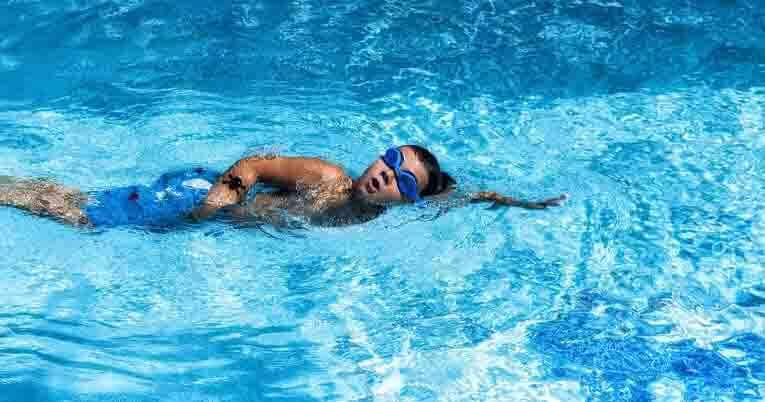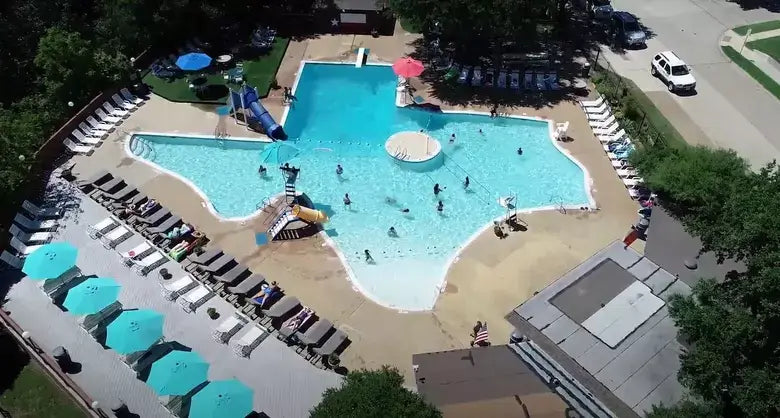What should I pay attention to when cleaning a swimming pool? It seems like a simple question, but dive beneath the surface (pun absolutely intended), and you'll find layers of complexity that separate pool owners who spend their summers swimming from those who spend them fighting algae and cloudy water. Having helped countless friends transform their green swamps back into sparkling oases, I've learned that successful pool cleaning isn't just about what you do – it's about understanding the why behind each task.
The Hidden Chemistry Lab in Your Backyard
Let's talk turkey about what's really happening in your pool. That beautiful blue water is actually a dynamic chemical environment that's constantly changing. According to the Association of Pool & Spa Professionals, maintaining proper water chemistry is the foundation of effective pool cleaning – get this wrong, and you're building your maintenance routine on quicksand.
The three pillars of pool chemistry that demand your attention:
- pH Balance: The master control that affects everything else. When your pH drifts above 7.8, chlorine becomes about as effective as a screen door on a submarine – technically present, but not doing much to keep unwanted elements out.
- Sanitizer Levels: Whether you're using chlorine, bromine, or salt systems (which actually produce chlorine), consistent sanitizer levels prevent microbial growth before it starts.
- Total Alkalinity: The unsung hero that prevents pH from bouncing around like a ping-pong ball during a championship match.
Test these three elements weekly at minimum, and you'll prevent about 80% of common pool problems. Skip this step, and you might as well be cleaning your car by driving through a mud puddle – technically you're doing something, but it's not helping.
Circulation: The Lifeblood Your Pool Can't Live Without
Here's something most pool owners don't realize until it's too late: you can have perfect chemistry and still end up with algae if your circulation is poor. Swimming pool maintenance studies show that inadequate circulation is the second leading cause of pool problems, right behind chemical imbalances.
Your pool pump should run long enough each day to turn over all your water at least once – preferably twice in summer months. For the average residential pool, that's a minimum of 8-10 hours daily. Skimping on runtime to save a few bucks on electricity is like trying to save money by not changing your car's oil – the long-term costs will dwarf any short-term savings.
But here's where technology has changed the game. Modern variable-speed pumps use up to 80% less energy than older single-speed models, and robotic pool cleaners like the Xbenbot Hydro-Puls create additional circulation while they clean, essentially giving you a backup circulation system that targets dead zones your main system might miss.
The Skimmer Basket: Your First Line of Defense
Pop quiz: What's the easiest way to prevent debris from clogging your filter? If you said "clean the skimmer baskets regularly," give yourself a gold star! These unassuming plastic baskets catch the majority of larger debris before it can make its way deeper into your filtration system.
Yet in my neighborhood pool tours (yes, I'm that guy who asks to see pump rooms at parties), I've found skimmer baskets that haven't been emptied in weeks. That's like never emptying your kitchen trash can and wondering why your house smells funky.
Empty those skimmer baskets at least twice weekly – daily during heavy debris seasons like fall. It takes 30 seconds and prevents hours of filter cleaning later. It's the pool maintenance equivalent of flossing your teeth – a small, regular investment that prevents painful, expensive problems down the road.
The Brushing Secret Nobody Talks About
Here's a truth bomb that pool service companies don't advertise: proper pool brushing is as important as vacuuming, maybe more so. According to professional pool maintenance guidelines, regular brushing prevents biofilm – that slippery layer of organic material where algae love to set up shop.
The walls, steps, and corners of your pool provide perfect breeding grounds for algae because:
- They receive less circulation than open water areas
- They accumulate microscopic debris that feeds algae
- They often have tiny surface imperfections where organisms can attach
Brushing these surfaces weekly disrupts forming colonies before they become visible problems. It's like weeding your garden when the weeds are just sprouting rather than waiting until they're taking over.
For vinyl liner pools, use a nylon brush. For concrete, gunite, or fiberglass, opt for a stainless steel or combination brush. And don't just make random swipes – use firm, overlapping strokes that cover every inch of surface. Your goal is gentle agitation that dislodges forming biofilm, not a CrossFit workout.
The Vacuum Dilemma: Manual vs. Automatic
Let's address the elephant in the pool: manual vacuuming is a pain in the chlorine tablets. It's time-consuming, physically demanding, and about as much fun as watching paint dry on a humid day. But until recently, it was a necessary evil for thorough pool cleaning.
Enter modern robotic pool cleaners like the Xbenbot Hydro-Puls, which have fundamentally changed the pool cleaning equation. Unlike older suction-side or pressure-side cleaners that relied on your pool's filtration system, these independent units:
- Clean with their own filtration systems, keeping debris out of your main filter
- Navigate intelligently to ensure complete coverage
- Scrub surfaces while vacuuming, combining two tasks in one
- Operate independently of your main system, providing additional circulation
The math is pretty compelling: manual vacuuming typically takes 30-45 minutes weekly, adding up to 20+ hours during a swimming season. A robotic cleaner reduces your involvement to about 2 minutes of setup and 3 minutes of filter cleaning afterward. That's a 90% reduction in your active cleaning time.
Even if you're not ready to embrace the robot revolution, consider upgrading from a manual vacuum to at least a suction-side automatic cleaner. Your future self will thank you when you're enjoying your pool instead of cleaning it.
The Filter Cleaning Conundrum: How Much Is Too Much?
Here's where well-meaning pool owners often go wrong: cleaning filters too frequently. It seems counterintuitive, but slightly dirty filters actually work better than perfectly clean ones at capturing fine particles.
According to filter manufacturer research, DE and cartridge filters reach peak efficiency at about 5-8 PSI above their clean starting pressure. Clean them too often, and you're actually reducing their effectiveness while wasting time and possibly damaging the filter media through excessive handling.
The right approach:
- Monitor pressure gauge readings weekly
- Clean only when pressure rises 8-10 PSI above the "clean" baseline
- Follow manufacturer cleaning protocols precisely
For cartridge filters, this typically means a deep clean only 2-3 times per season for the average residential pool. That's a far cry from the weekly cleanings many owners perform unnecessarily.
The Seasonal Cleaning Calendar That Actually Works
Pool cleaning isn't a one-size-fits-all proposition throughout the year. The cleaning schedule that works perfectly in July might leave your pool a mess in October. Smart pool owners adapt their approach seasonally:
Spring Awakening (Opening Season)
- Deep clean all surfaces before filling/uncovering
- Shock treat water to establish baseline sanitizer level
- Run filtration 24/7 until water clarity is fully restored
- Test and adjust chemistry daily until stabilized
Summer Maintenance (Peak Swimming Season)
- Test chemistry 2-3 times weekly
- Run robotic cleaner like the Hydro-Puls every 2-3 days
- Brush surfaces weekly
- Check filter pressure weekly
- Shock treat monthly (more often with heavy use)
Fall Preparation (Pre-Closing Season)
- Increase skimmer basket checking to daily (leaf season)
- Run robotic cleaner more frequently to handle increased debris
- Maintain chemistry vigilantly despite decreased swimming
- Begin reducing water level in preparation for winter (in cold climates)
Winter Protocol (Closed Season/Minimal Use)
- For open pools: reduce filtration to 4-6 hours daily
- Maintain chemistry even when not swimming
- Run robot weekly to prevent sediment buildup
- Brush monthly to prevent biofilm formation
This adaptive approach ensures you're directing your cleaning efforts where they'll have the most impact based on the current challenges your pool faces. It's the difference between a reactive "putting out fires" approach and a proactive maintenance strategy.
The Tech Revolution Changing the Pool Cleaning Game
The pool industry isn't exactly known for rapid innovation – many pool owners are still cleaning their pools the same way their parents did 30 years ago. But recent technological advances have created opportunities to dramatically reduce cleaning time while improving results.
Beyond robotic cleaners like the Xbenbot Hydro-Puls, consider integrating:
- Variable-speed pumps: Reduce energy consumption by up to 80% while providing more precise circulation control
- Salt chlorine generators: Produce consistent sanitizer levels without handling chemicals
- Smart chemistry monitors: Test water continuously and alert you to changes before problems develop
- UV and ozone supplemental sanitizers: Reduce chemical dependency while improving water quality
Each of these technologies requires some upfront investment but pays dividends in reduced maintenance time and improved water quality. It's like upgrading from a flip phone to a smartphone – once you experience the difference, you'll wonder how you ever managed the old way.
The Bottom Line: Work Smarter, Not Harder
The pool owners who enjoy their pools the most aren't the ones who spend hours each week maintaining them – they're the ones who've developed efficient systems that maximize results while minimizing effort. By understanding the science behind pool maintenance and leveraging modern technology like the Xbenbot Hydro-Puls Robotic Pool Cleaner, you can transform pool cleaning from a dreaded chore into a minor task that doesn't interfere with your enjoyment.
Remember, the goal isn't just a clean pool – it's a clean pool that doesn't consume your weekends maintaining it. With the right approach and tools, that's not just possible – it's actually easier than you might think.
So the next time someone asks what they should pay attention to when cleaning a swimming pool, you can smile knowingly and say, "It's not about working harder – it's about working smarter." Then go enjoy a swim in your crystal-clear water while your robotic friend handles the cleaning for you.




Leave a comment
This site is protected by hCaptcha and the hCaptcha Privacy Policy and Terms of Service apply.